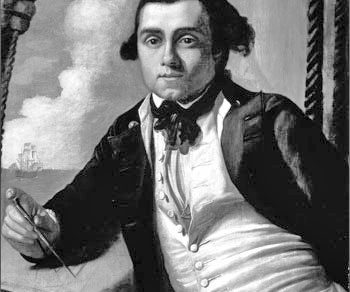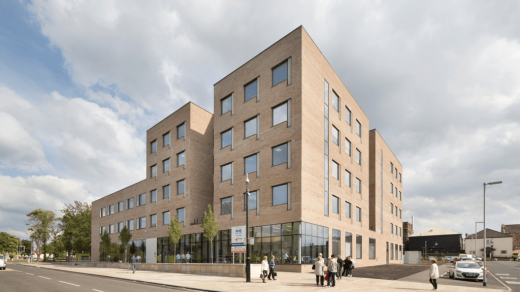After the Act of Union, growing prosperity in Scotland led to a spate of new building, both public and private. The threat of Jacobite insurrection or invasion meant that Scotland also saw more military building than England in this period, relying on the strength of inclined and angled engineered masonry work combined with the ability of earthen toppings that could deflect and absorb artillery fire. This culminated in the construction of Fort George, near Inverness (1748–69), with its projecting bastions and redoubts. Scotland produced some of the most significant architects of this era, including: Colen Campbell (1676–1729), James Gibbs (1682–1754), James (1732–94), John (1721–92) and Robert Adam (1728–92) and William Chambers (1723–96), who all created work that to some degree looked to classical models. Edinburgh‘s New Town was the focus of this classical building boom in Scotland. From the mid-eighteenth century it was laid out according to a plan of rectangular blocks with open squares, drawn up by James Craig and built in strong Craigleith sandstone which could be precisely cut by masons. Most residences were built as tenement flats, where, in contrast to contemporary building in England where buildings were divided vertically into different houses, they were divided horizontally, with different occupants sharing a common staircase. The smallest might have only one room, the largest several bedrooms and drawing rooms. This classicism, together with its reputation as a major centre of the Enlightenment, resulted in the city being nicknamed “The Athens of the North”. The gridiron plan, building forms and the architectural detailing would be copied by many smaller towns, although rendered in locally quarried materials. Despite this building boom, the centralisation of much of the government administration, including the king’s works, in London, meant that a number of Scottish architects spent most of all of their careers in England, where they had a major impact on Georgian architecture.
Rear view of a nineteenth-century Scottish tenement, Edinburgh

Colen Campbell was influenced by the Palladian style and has been credited with founding Georgian architecture. Architectural historian Howard Colvin has speculated that he was associated with James Smith and that Campbell may even have been his pupil. He spent most of his career in Italy and England and developed a rivalry with fellow Scot James Gibbs. Gibbs trained in Rome and also practised mainly in England. His architectural style did incorporate Palladian elements, as well as forms from Italian baroque and Inigo Jones, but was most strongly influenced by the interpretation of the Baroque by Sir Christopher Wren.
William Adam, was the foremost architect of his time in Scotland, designing and building numerous country houses and public buildings. Among his best known works are Hopetoun House near Edinburgh, and Duff House in Banff. His individual, exuberant, style was built on the Palladian style, but with Baroque details inspired by Vanbrugh and Continental architecture. After his death, his sons Robert and John took on the family business, which included lucrative work for the Board of Ordnance. Robert emerged as leader of the first phase of the neo-classical revival in England and Scotland from around 1760 until his death. He rejected the Palladian style as “ponderous” and “disgustful”. However, he continued their tradition of drawing inspiration directly from classical antiquity, influenced by his four-year stay in Europe. An interior designer as well as an architect, with his brothers developing the Adam style, he influenced the development of architecture, not just in Britain, but in Western Europe, North America and in Russia, where his patterns were taken by Scottish architect Charles Cameron. Adam’s main rival was William Chambers, another Scot, but born in Sweden. He did most of his work in London, with a small number of houses in Scotland. He was appointed architectural tutor to the Prince of Wales, later George III, and in 1766, with Robert Adam, as Architect to the King. More international in outlook than Adam, he combined Neoclassicism and Palladian conventions and his influence was mediated through his large number of pupils.




????????????????
thank you friend.